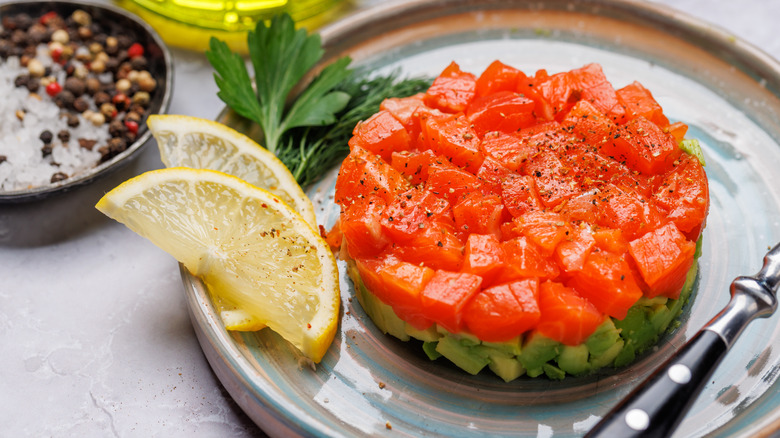The Fish Dish Martha Stewart Says She Could 'Eat Every Day'
Martha Stewart wants to eat raw fish every day — and no, she's not talking about sushi. "I could eat probably a fish tartare every day with a little dab of caviar on it," Stewart told People. Of course, she wouldn't limit herself to one type of fish, though. "I would probably change the fish from day to day, like between fluke and flounder and tuna and hake," the media mogul and homemaker extraordinaire clarified. "Anything ultra fresh. That would be very good."
Stewart also seems to love another, perhaps more unconventional, fish dish. As Town and Country noted, pickled herring is Martha Stewart's favorite bedtime snack. Yes, the star chows down on one of the world's most famously pungent foods: it's part of her Eastern European heritage. But this is the first time she's gone public about her love of fish tartare. It's a relatively simple dish to make at home — as long as you have access to fresh fish.
What is fish tartare, anyway?
Personally, when I think of raw fish, I think of sushi. (I didn't even know fish tartare was a thing — my tartare knowledge stopped at steak.) But Japanese culture doesn't have a monopoly on raw fish. Italians eat crudo, and ceviche is popular in Peru — though the fish is technically "cooked" in an acidic marinade. Mexico has its own fresh fish dish, aguachile.
Fish tartare has murkier origins. Some say that it's an invention of the 1980s, when French-trained Japanese chef, Shigefumi Tachibe, introduced the dish to Beverly Hills. But versions of the dish go back much, much further. Recipes even appear in English cookbooks dating back to the 17th century. Other reports suggest it might have originated in French Polynesia, too.
While sashimi is typically served in thin slices, and ceviche is cut into larger chunks, fish tartare is diced. Like a ceviche preparation, the fish is tossed in a light sauce — though it's not marinated long enough to cook. The fish, along with additional fillings, is then shaped into a short cylinder with the help of a mould. Exact ingredients vary, but bright, acidic flavors, like lemon or vinegar, are the norm. Many recipes include finely-diced vegetables, like onion or avocado, too. If you plan to make it yourself, look for fresh, sushi-grade fish from reputable vendors. Avoid freshwater fish: you could expose yourself to parasites if you eat these species raw. And, of course, don't forget a proper Martha Stewart-esque serving of caviar to go with your tartare — it's a good thing.

